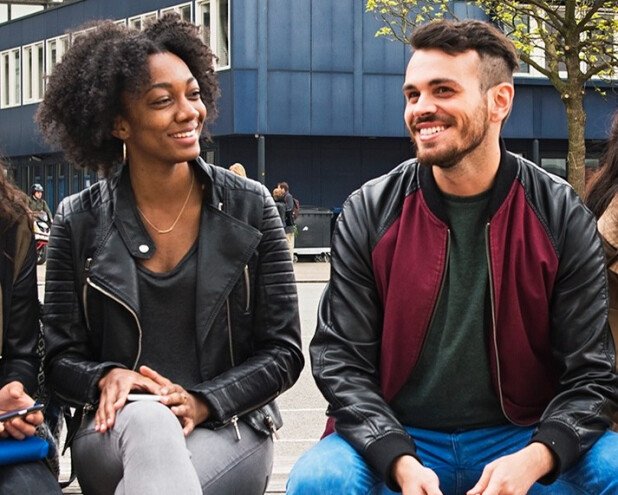Time of discoverers & reformers (1500-1600), period 5
- Renaissance: rebirth of art
- Architecture: Dome of Florence:
- Santa Maria del Fiore
- By Brunellesschi
- Biggest dome till renaissance (till then)
- Inner and outer construction à inner was needed to build a light construction holding it together à construction of ribbons and wood
- Leonardo da Vinci made the Homo Quadratus (ca. 1490)
- Based on the theory written by Vitruvius called “Vitruvian Man”
- Vitruvius described the human figure as being the principal source of proportion among the Classical order of architecture
- David sculptures:
- Donatello made the bronze sculpture called David, this was the first free-standing sculpture since antiquity. Between the feet of David you can see the head of Goliath.
- Michelangelo made the marble David, ordered by Florence its city council-àthis was symbolic because Florence was also a small city in that time so they showed they were still powerful besides being small. On the shoulder of David you can see his swing.
- Polymath/ Homo Universalis = a person whose expertise spans a significant number of different subject areas
- Music:
- Not Gregorian chant but music with chords (major & minor scales) and rhythms
- Vocal: mass (sang by choirs in church), madrigal (polyphonic song à multiple voices)
- Instrumental: danceforms
- Arnolfini Portrait, Jan van Eijk
- Dog represents loyalty
- Burning candle represents the presence of God
- They’re married because the hair of the woman isn’t loose
- The woman standing next to the bed represents the woman taking care of the household
- The man standing next to the window represents the man taking care of the outside world
- Oranges symbolize wealth
- Woman: pregnant/ fashion?
- Other characteristics of the time of discoverers and reformers:
- People learned reading and writing so they were able to create their own interpretation of the Bible
- People started science à banned from the church
Women:
- Ruff: coloured and wired collar pleated into ruffles, could be made of lace, or jewelled
- Neck wisk: a falling ruff that was open at the front, resembling a collar
- Basquine: boned bodice made of whalebone and leather, gave the appearance of wider shoulders tapering to a tiny waist
- Finestrella sleeves: sleeves where the outer fabric was slit horizontally and the sleeves of the undergarment were pulled through
- Wings: rolled fabric worn vertically around each shoulder, between the sleeve and bodice
- Farthingale: topmost petticoat; used to give shape to the skirt
- Verdingale: stiff sheel of fabric, often pleated, worn between bodice and the skirt
- Wasp waist: deep V-shaped waistline above the skirt
Church did counter-reformation (see next period)
Men:
- Beret: thin, loose hat that usually tilts towards one side of the head
- Doublet: man’s bodice
- Funnel sleeves: sleeves that were fitted at the upper arm and ballooned out, fitted around the wrist
- Canions: upper stocks worn from the doublet to the knee
- Truck hose: balloonish-looking breeches that extended from the doublet to above the knee
- Codpiece: padded triangle of fabric worn laced to the front of the trunk hose
- Duckbill: low shoes
Time of regents and monarchs (1600-1700), period 6
- Time of counter-reformation
- Visual arts: time of baroque (inside churches)
- Baroque:
- Both southern & northern Europe
- Diego Vélazquez, Las Meninas, 1656
- Heavily decorated, lots of details
- Rembrandt van Rijn: famous for clair obscure à creates light and shadow parts à not detailed, not like a picture, rough pencil strokes
- Porcelain, Delftware (called “China” by the English because it’s originally from China) à invented the Tulip Vase, showed your wealth
- Music:
- Opera was invented
- First composer was Monteverdi, he made l’Orfeo
- Basso continuo: bassline played on an instrument which continues all the time
- Melodies have complex decorated melodic lines (Baroque)
- Start of era in which opera was a music style
- Music becomes more dramatic
- Rise of instrumental music (basso continuo)
- Concertato: contrast between opposing groups of voices and groups of instruments
- 2 types of opera:
- Opera Seria: heroic, based on mythological stories
- Opera Buffa: ordinary themes
Time of wigs and revolutions (1700 – 1800), period 7
- Biggest revolution: French revolution
- Rococo style: even more detailed and filled than Baroque, about ordinary themes, famous painter: Jean Antoine Watteau
- Neoclassicism
- The Death of Marat (1793) by Jacques-Louis David
- Half-empty, lot of negative space
- Paint human body in an objective way (like a sculpture) à focus on the anatomy of the human body
- Design: Meissenporcelain
- Factory made, so affordable for many more people
- First Opera Buffa was made by Mozart: Die Zauberflöte (1791), which is a comic and not heroic
- St Matthew Passion, Bach (1729)
- Last days of the life of Jesus Christ
- Eastern
- Bach made popular composition containing text from the Bible








REACTIES
:name
:name
:comment
1 seconde geleden